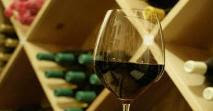How to Host a Wine Tasting Party
Tuesday, December 23, 2008
By Scott Wells
Having a wine tasting party is a lot of fun. Although, this might seem to be for only the sophisticated crowd, anyone can learn about wine and hold a wine tasting. This is a great way to get together and experiment with new varietals. You can use any method of a wine tasting when you have a party.
The first thing you need to do is determine the type of wine tasting you want to have with your friends. The best 'first' wine tasting method is the Big 8 because this gives everyone a good idea the differences of varietals right up front. You can choose from the horizontal, vertical, pairings with cheese or chocolate, or other methods. It is up to you as it is your wine tasting party.
You will next need to determine who you are going to invite to the party. Be sure there is enough room for all of the guests you want to invite before you send out any invitations. You want enough chairs for people to sit comfortably. You also don't want to have too many people as it could be a bad situation if people feel rushed.
When you think about the amount of people you have at your wine tasting party will help you know how much wine you need to buy. Be sure to have enough so all of the guests are able to taste the same wines.
Thinking about the 'who' in who you are going to invite is important also. You might not want to invite friends who think they are experts on wine or they might get a little annoying. They also might take over the entire learning process of the different wines. This is supposed to be fun so be sure to invite fun people and people who are open minded.
You should design a card for each wine being tasted. This will be filled out by each guest as they taste each wine. They will be able to record the aroma they smell from each wine, the flavor, what it tastes like with a specific cheese, etc. You can also have them score the different wines on the back of each card also.
The best way to do a wine tasting with your friends is by holding a blind wine tasting party. You will need black or dark colored glasses so the guests cannot see the colors of the different wines. This way their perceptions will be more honest and accurate.
You also do not ever want to tell your guests what the prices of a specific wine was because they will immediately pass judgment on whether or not it is a good wine. Some people immediately assume wine is no good if it is less than $100. Never tell the price to your guests, especially if you have many different wines varying greatly in price. It is okay to tell prices after the wine tasting is over.
It is important not to have labels on the bottles or anywhere they can be found. If you leave a label on the counter then you may have a cheating guest. Allow the guests to incorporate their senses properly without any help or hints.
You don't have to go all out when you decorate for a wine tasting party. It is important to have a white table cloth so the wine color can be properly assessed. Many people like to decorate with candles, paintings, and flowers. It is entirely up to you how you want to decorate at your party.
Be sure you have plenty of light at your wine tasting party. This is important or you will have difficulty with proper assessments of the color of the wine. You might serve a very cloudy wine but if the room is dim and candle light is shining it may look brilliant.
When you serve wines at a wine tasting party be sure that they are served from dry to sweet. Start with the light white wines first and work your way slowly to the dark and heavy red wines. You should also start with younger wines to the older wines. If you are doing a vertical test based on years then you will be sure to start with the newest wines first.
When you pour wine at a wine tasting be sure you pour enough in the glass to taste the wine and not too much. Two ounces is usually a perfect amount to pour for your guests to get the right amount for a proper tasting of the wine.
Be sure to provide snacks like unflavored, unsalted crackers and bread to your guests. You don't want your guests to be hungry. This will also cleanse their palate so they are ready for the next wine to try on your list.
The most important thing to consider at a wine tasting party is driving. If your wine tasting party consists of people drinking the wine and not just tasting then they will need to find a ride home. Be sure rides have been arranged so all of your guests are safe when the party is over.
Scott Wells writes for http://DrugAbuseFocus.com/53/ - where you can read alcohol and drug abuse stories for the purpose of inspiration, motivation or to provide hope to you or someone you love. Drug and alcohol abuse is serious. Read the stories of others or anonymously publish true stories about drug and alcohol abuse.
Article Source: http://EzineArticles.com/?expert=Scott_Wells
Read more...




